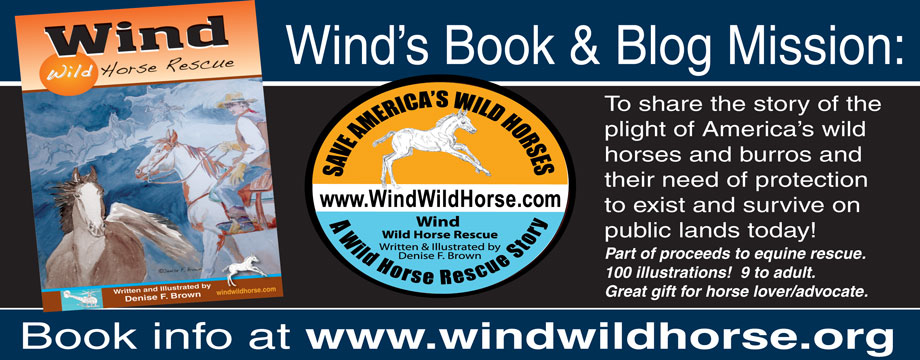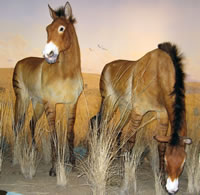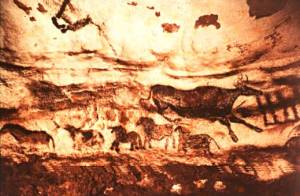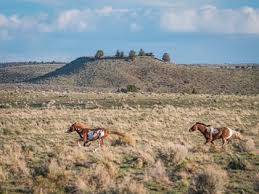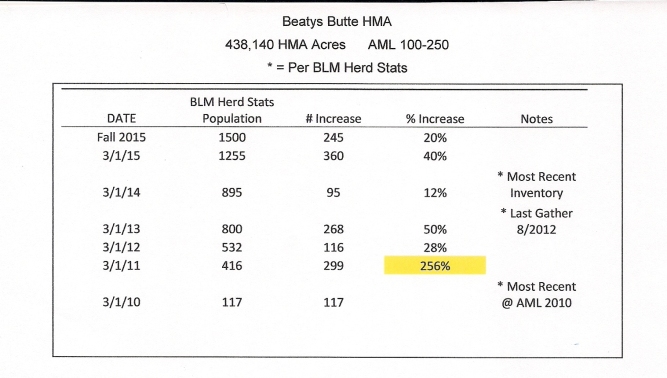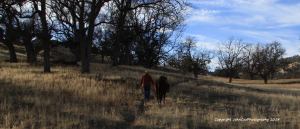 “If the Bureau or Land Management or their Supporters say it, it is simply something of a misrepresented fact, or just a lie. Profound that a government agency is and remains at that level — which includes lack of integrity, unethical behavior, and at times unchecked criminal conduct.” Anonymous and Witness
“If the Bureau or Land Management or their Supporters say it, it is simply something of a misrepresented fact, or just a lie. Profound that a government agency is and remains at that level — which includes lack of integrity, unethical behavior, and at times unchecked criminal conduct.” Anonymous and Witness
Now it is obvious, more than every before, American’s can not trust our government agencies to complete tasks with responsible conduct, ethics, and honesty. Integrity is gone from such government agencies as the Bureau of Land Management (BLM) and their oversight agency the Department of the Interior.
Exclusion of Cattle Grazing
But rather than editorialize, let’s take a look at a situation, very real, very questionable in ethics and conduct. One can state in a blunt way that BLM can not only no longer be trusted due to their questionable manipulation of science and data gathering, but they are dishonest as well as criminal. Taking the effects of cattle grazing out of technical reports is simply dishonest, and costly to the taxpayer.
What is criminal in nature about this circumstance? Extremely large budgets are completed, and are based on the honesty of Science Data and the Technical Reports to follow. Also, Environmental Assessments, assumed honest data is included; give outright permission for all of types of projects on Public Lands to be conducted. But without complete honesty of data, then we can simply surmise dishonesty in not only fact, but they are conducting fraudulent circumstances to generate projects and roundups of wild horses, under the guise of falsified information.
“GRAZING PUNTED FROM FEDERAL STUDY OF LAND CHANGES IN WEST Scientists Told to Not Consider Grazing Due to Fear of Lawsuits and Data Gaps Posted on Nov 30, 2011 — PEER http://www.peer.org
Washington, DC — The U.S. Bureau of Land Management is carrying out an ambitious plan to map ecological trends throughout the Western U.S. but has directed scientists to exclude livestock grazing as a possible factor in changing landscapes, according to a scientific integrity complaint filed today by Public Employees for Environmental Responsibility (PEER). The complaint describes how one of the biggest scientific studies ever undertaken by BLM was fatally skewed from its inception by political pressure. . .
Exclusion of grazing was met with protests from the scientists. Livestock grazing is permitted on two-thirds of all BLM lands, with 21,000 grazing allotments covering 157 million acres across the West. As one participating scientist said, as quoted in workshop minutes: “We will be laughed out of the room if we don’t use grazing. If you have the other range of disturbances, you have to include grazing.” In the face of this reaction, BLM initially deferred a decision but ultimately opted to –
- Remove livestock grazing from all Ecoregional assessments, citing insufficient data. As a result, the assessments do not consider massive grazing impacts even though trivial disturbance factors such as rock hounding are included; and
- Limit consideration of grazing-related information only when combined in an undifferentiated lump with other native and introduced ungulates (such as deer, elk, wild horses and feral donkeys).”
One cannot discuss the effects on streams by grazing livestock without recognizing the interwoven and connected nature of watersheds, riparian zones, streams, and watershed activities. Activities affecting watersheds or riparian zones also affect stream ecosystems directly, indirectly, and cumulatively. So here I will simply peruse the situation from a common sense and well referenced perspective.
Impacts of vegetation removal can be placed into two categories: shifts in the plant community structure and removal of plant growth or biomass. Livestock can do both of these. Major changes in the plant community structure and usually a reduction in the number of species have been reported in the western United States.
When we discuss, for example, wild horses starving on our nations multi-use Public Lands, it is the result – most often – of over-grazing from cattle and sheep on Public Lands. Yes a comparative exists — the Canary in the mines of years past, currently the wild horses on Public Lands, are and remain speaking Loud And Clear:
Public lands are being and continue to be mismanagement by the BLM . . .
Summary of Effects of Vegetation Removal
- Vegetation removal exposes soil to the energy of raindrops, facilitates sheet flow erosion, runoff, and the ability to move sediment, increase in floods, sediment clearing costs very high, et al . . .
- In contrast, vegetation increases stream bank strength to resist erosion.
- Stream channels along heavily vegetated areas are deeper and narrower than along poorly vegetated areas.
- Sediment runoff is higher for heavily grazed watersheds compared to lightly grazed watersheds.
Summary of Temperature Effects
- Removal of streamside vegetation can increase mean temperature and temperature extremes.
- Streams along wooded riparian zones may be cooler in summer and warmer in winter.
- Relatively small changes in stream temperature can shift aquatic communities a 3.6 degree F increase is sufficient to shift from a coldwater to a warm water habitat.
- An increase in stream temperature from 3.6 to 9 degrees F is common when streamside vegetation is removed.
Sedimentation is recognized as the most prevalent and damaging pollution in streams in North America (Waters, 1995). Livestock grazing can increase sediment load from the watershed, increase in stream trampling, increase disturbance and erosion from overgrazed stream banks, reduced sediment trapping by riparian and in stream vegetation, decreased bank stability and increased peak flows from compaction. In streams assessed in 2000, the most common agricultural pollutant was silt, which was a contributing factor for 31% of streams considered impaired (USEPA, 2000).
Summary of Effects Due to Channel Morphology
- Unstable stream channels and the loss of fish and invertebrate habitat are often attributed to cattle grazing practices in riparian areas.
- Stream channels along heavily vegetated areas are deeper and narrower than along poorly vegetated areas.
- Livestock management often causes local changes in habitat, thereby impacting fish, large mammals (vertebrates), birds, insects, invertebrates, and simply much wildlife that makes an Ecosystem or entire environment healthy.
- Changes are much more pronounced in small streams than large ones; impacts on lakes are under-studied but appear to be mineralized or disturbed (Klamath Lake, Or. For example.
- The natural variance among stream channels, lakes, and wetlands makes generic conclusions very difficult. Most impacts and most Best Management Practices will be site-specific. Site-specific BMPs depend on stream morphology.
Summary of Nutrient Effects
- Excess nutrients in streams cause eutrophication to increase. Eutrophication is the process where aquatic vegetation grows quickly and decomposes, consuming oxygen from the stream.
- Nutrient concentrations (various forms of N and P) in runoff increase with increasing grazing duration.
- Retiring areas from grazing but maintaining grass vegetation reduces nutrient delivery, but dissolved N may be reduced differentially in relation to dissolved P.
Conclusion
Here I have merely touched upon things that are severe and directly related to Cattle Grazing on our Public Lands. It appears overwhelmingly foolish to take cattle and their effects on our Public Lands out of any investigation or technical report – or blocked from collecting data on cattle or sheep grazing on our Public Lands.
“The current environmental focus on controlling nonpoint pollution to protect our surface water has led to the discussion of management of our Public lands. The Environmental Protection Agency states that agriculture has a greater impact on stream and river contamination than any other nonpoint source. Grazing, particularly improper grazing or overabundant grazing of public lands areas can contribute to many nonpoint source pollution. Negative impacts downstream include the contamination, for example, of drinking water supplies and watersheds alike (55% of drinking water comes from surface water” (Brown, 1994) . . .
It is time American’s start asking, well no, demanding honesty, integrity, and responsible conduct from the Bureau of Land Management and the Department of the Interior. Then demand they stop lying to the American Public, manipulating science to their political agendas, and lie to the taxpaying public about constantly.
So the next time a BLM or DOLI, or BLM supporters discuss such things as Environmental Assessments, Wild Horse Herd Counts by BLM, or much of anything that deals with our Public Lands, it can be considered questionable at best – do your research, question them and then ask for proof, and not their proof, as that is questionable, but proof from independent science or people in knowledgeable of BLM and government misrepresentation and lies. . .
NOTE: American’s, taxpayer’s, need to WAKE UP – this is ongoing and happening right before our eyes, and most people say nothing, and accuse the wrong people of spending taxpayer money irresponsibly! Taxpayer’s have indeed paid BLM and their contractors nearly $410 million dollars, in the past 6 years, for the saving of dead-horses (ironic at its best), which they either killed on the range during roundups, or have killed or sent to slaughter — this is in accord with their own inventory and payment vouchers. A good example of their misconduct and ripping taxpayers off — actually it is criminal as well, but no one of authority will investigate.
___________________________
References
Bellows, B. C. March 2003. Protecting riparian areas: Farmland management strategies. Soil Systems Guide, Appropriate Technology Transfer for Rural Areas. At http://www.attra.ncat.org.
Belsky, A. J., A. Matzke, and S. Uselman. 1999. Survey of livestock influences on stream and riparian ecosystems in the western United States. Journal of Soil and Water Conservation 54(1): 419-431.
Bohn, C. C., and J. C. Buckhouse. 1986. Effects of grazing management on streambanks. Trans. N. Am. Wildl. Natl. Resour. Conf. 51:265-271.
Bryant, H. T., R. E. Blaser, and J. R. Peterson. 1972. Effect of trampling by cattle on bluegrass yield and soil compaction of a meadowville loam. Agron. J. 64:331-334.
Chichester, F. W., R. W. Van Keuran, and J. L. McGuinness. 1979. Hydrology and chemical quality of flow from small pastured watersheds: Chemical quality. J. Envir. Qual. 8(2): 167-171.
Cole, D. W., 1981. Nitrogen uptake and translocation by forest ecosystems. In: F. E. Clark and T. Rosswall (eds.) Terestrial Nitrogen Cycles. Ecological Bulletin. Vol. 33. p. 219-232.
Cooper, A. B., C. M. Smith, and M. J. Smith. 1995. Effects of riparian set-aside on soil characteristics in an agricultural landscape Implications for nutrient transport and retention. Agric. Ecosystems Environ. 55:61-67.
Duff, Donald A. 1979. Riparian habitat recovery on Big Creek, Rich County, Utah. In Proceedings: Forum Grazing and Riparian/Stream Ecosystems. Trout Unlimited, Inc. p. 91
Gardner, J. L. 1950. Effects of thirty years of protection from grazing in desert grassland. Ecology. 31:44-50.
Generic Environmental Impact Statement on Animal Agriculture: A Summary of Literature Related to the Effects of Animal Agriculture on Water Resources (G), 1999. The Environmental Quality Board, College of Agriculture, Food, and Environmental Sciences (COAFES), Univ. of Minnesota.
Green, D. M., and J. B. Kauffman. 1989. Nutrient cycling at the land-water interface: The importance of the riparian zone. In: R. E. Gresswell, B. A. Barton, and J. L. Kershner (eds.) Practical Approaches to Riparian Resource Management: An Education Workshop. U.S. Bureau of Land Management. Billings, MT. p. 61-68.
Gregory, S. V., F. J. Swanson, W. A. McKee, and K. W. Cummins. 1991. An ecosystem perspective of riparian zones. Bioscience 41(8): 540-550.
Hack-ten Broeke, M. J. D., W. J. M. De Groot, and J. P. Dijkstra. 1996. Impact of excreted nitrogen by grazing cattle on nitrate leaching. Soil Use Manage. 12:190-198.
Jawson, M. D., L. F. Elliott, K. E. Saxton, and D. H. Fortier. 1982. The effect of cattle grazing on nutrient losses in a pacific northwest setting, USA. J. Environ. Qual. 11:628-631.
Kaufmann, J. B., and W. C. Kreuger. 1984. Livestock impacts on riparian ecosystems and streamside management implications: A review. J. Range Manage. 37:430-438.
Knapp, R. A., V. T. Vredenburg, and K. R. Matthews. 1998. Effects of stream channel morphology on golden trout spawning habitat and recruitment. Ecol. Appl. 8:1104-1117.
Lemly, D. A. 1982. Modification of benthic insect communities in polluted streams: Combined effects of sedimentation and nutrient enrichment. Hydrobiologia. 87:229-245.
Li, H. W., G. A. Lamberti, T. N. Pearsons, C. K. Tait, J. L. Li, and J. C. Buckhouse. 1994. Cumulative effects of riparian disturbances along high desert trout streams of the John Day Basin, Oregon. Trans. Am. Fisheries Soc. 123:627-640.
Magilligan, F. J., and P. F. McDowell. 1997. Stream channel adjustments following elimination of cattle grazing. J. Am. Water Resour. Assn. 33:867-878.
Marcuson, Patrick E. 1977. Overgrazed streambanks depress fishery production in Rock Creek, Montana. Fish and Game Federation Aid Program. F-20-R-21-11a.
McColl, R. H. S., and A. R. Gibson. 1979. Downslope movement of nutrients in hill pasture,Taita, New Zealand: 2. Effects of season, sheep grazing and fertilizer. New Zealand J. Agric. Res. 22:151-162.
Meyers, T. J., and S. Swanson. 1991. Aquatic habitat condition index, stream-types and livestock bank damage in northern Nevada. Water Resour. Bull. 27:667-677.
Minshall, G. W. 1984. Aquatic insect substratum relationships. In V. H. Resh and D. M. Rosenberg (ed.) The ecology of aquatic insects. Praeger Publishers, New York. p. 356-400.
Mwendera, E. J., and M. A. M. Saleem. 1997a. Infiltration rates, surface runoff, and soil loss as influenced by grazing pressure in the Ethiopian highlands. Soil Use Manage. 13:29-35.
Mwendera, E. J., M. A. M. Saleem, and A. Dibabe. 1997. The effect of livestock grazing on surface runoff and soil erosion from sloping pasture lands in the Ethiopian highlands. Australian J. Experimental Agric. 37:421-430.
Naeth, M. A., and D. S. Chanasyk. 1996. Runoff and sediment yield under grazing in foothills fescue grasslands of Alberta. Water Res. Bull. 32:89-95.
Naiman, R. J., and H. Decamps. 1997. The ecology of interfaces: Riparian zones. Annual Review of Ecology and Systematics. V. 28. p. 621-658.
Olness, A., S. J. Smith, E. D. Rhoades, and R. G. Menzel. 1975. Nutrient and sediment discharge from agricultural watersheds in Oklahoma. J. Environ. Qual. 4:331-336.
Ohio’s Hydrologic Cycle. 1994. L. C. Brown. AEX 461. Ohio State University Extension.
Orodho, A. B., M. J. Trlica, and C. D. Bonham. 1990. Long term heavy grazing effects on soil and vegetation in the four corners region. Southwest Naturalist. 35:9-14.
Owens, L. B., W. M. Edwards, and R. W. Van Keuren. 1989. Sediment and nutrient losses from an unimproved all-year grazed watershed. J. Environ. Qual. 18:232-238.
Owens, L. B., W. M. Edwards, and R. W. Van Keuren. 1996. Sediment losses from a pastured watershed before and after stream fencing. J. Soil Water Conserv. 51:90-94.
Owens, L. B., W. M. Edwards, and R. W. Van Keuren. 1997. Runoff and sediment losses resulting from winter feeding on pastures. J. Soil Water Conserv. 52:194-197.
Owens, L. B., W. M. Edwards, and R. W. Van Keuren. 1983. Surface runoff quality comparisons between unimproved pasture and woodlands. J. Environ. Qual. 12:518-522.
Owens, L. B., W. M. Edwards, and R. W. Van Keuren. 1994. Groundwater nitrate levels under fertilized grass and grasslegumes pastures. J. Environ. Qual. 23:752-758.
Richards, R. P., F. G. Calhoun, and G. Matisoff. 2002. Lake Erie agricultural systems for environmental quality project. J. of Envir. Qual. 31:6-16.
Rabalais, N. N., R. E. Turner, and W. J. Wiseman, Jr. 2001. Hypoxia in Gulf of Mexico. J. of Envir. Qual. Mar-Apr 30(2):320-329.
Platts, W. S. 1991. Livestock grazing. In: Influence of forest and rangeland management on Salmonid fishes and their habitats. American Fisheries Society, Special Publication 19:389-423.
Platts, W. S., and R. F. Nelson. 1985. Stream habitat and fisheries response to livestock grazing and instream improvement structures, Big Creek, Utah. J. Soil Water Conserv. 40:374-379.
Platts, W. S. and F. J. Wagstaff. 1984. Fencing to control livestock grazing on riparian habitats along streams: Is it a viable alternative. N. Am. J. Fisheries Manage. 4:266-272.
Peterjohn, W. T., and D. L. Correll. 1984. Nutrient dynamics in an agricultural watershed: Observations of a riparian forest. Ecology 65: 1466-1475.
Quinn, J. M., R. B. Williamson, R. K. Smith, and M. L. Vickers. 1992. Effects of riparian grazing and channelization on streams in southland New Zealand 2. Benthic invertebrates. New Zealand J. Marine Freshwater Res. 26:259-273. LS-2-05 page 10
Rauzi, F., and C. L. Hanson. 1966. Water intake and runoff as affected by intensity of grazing. J. Range Manage. 19:351-356.
Schepers, J. S., and D. D. Francis. 1982. Chemical water quality of runoff from grazing land in Nebraska: I. Influence of grazing livestock. J. Environ. Qual. 11:351-354.
Schepers, J. S., B. L. Hackes, and D. D. Francis. 1982. Chemical water quality of runoff from grazing land in Nebraska: II. Contributing factors. J. Environ. Qual. 11:355-359.
Sidle, R. C., and A. Sharma. 1996. Stream channel changes associated with mining and grazing in the Great Basin. J. Environ. Qual. 25:1111-1121.
Smith, C. M. 1989. Riparian pasture retirement effects on sediment phosphorus and nitrogen in channellized surface run-off from pastures. New Zealand J. Mar. Freshwater Res. 23:139-146.
Stout, W. L., S. A. Fales, L. D. Muller, R. R. Schnabel, W. E. Priddy, and G. F. Elwinger. 1997. Nitrate leaching from cattle urine and feces in northeastern U.S. Soil Sci. Soc. Am. 61:1787.
Sweeny, B. W. 1993. Effects of streamside vegetation on macroinvertebrate communities of White Clay Creek in eastern North America. Proc. of the Natural Science Academy of Philadelphia. 144:291-340.
Tait, C. K., J. L. Li, G. A. Lamberti, T. N. Pearsons, and H. W. Li. 1994. Relationships between riparian cover and community structure of high desert streams. J. N. Am. Benthological Soc. 13:45-56.
USEPA. 2000. National Water Quality Inventory: 2000 Report to Congress Executive Summary, Office of Water, Washington, DC 20460. [Online] Available at http://www.epa.gov/305b.
Waters, T. F. 1995. Sediment in streams, sources, biological effects and control. American Fisheries Society Monograph 7.
White, R. K., R. W. VanKeuren, L. B. Owens, W. M. Edwards, and R. H. Miller. 1983. Effects of livestock pasturing on non-point surface runoff. Project Summary, Robert S. Kerr Environmental Research Laboratory, Ada, Oklahoma. EPA- 600/S2-83-011. 6p.
Williamson, R. B., C. M. Smith, and A. B. Cooper. 1996. Watershed riparian management and its benefits to a eutrophic lake. J. Water Res. Planning Manage.-ASCE. 122:24-32.
Williamson, R. B., R. K. Smith, and J. M. Quinn. 1992. Effects of riparian grazing and channelization on streams in Southland New Zealand I. Channel form and stability. New Zealand Journal of Marine & Freshwater Research. 26:241-258.
Wohl, N. E., and R. F. Carline. 1996. Relations among riparian grazing, sediment loads, macroinvertebrates, and fishes in three central Pennsylvania streams. Can. J. Fisheries Aquatic Sci. 53(suppl. 1):260-266.

